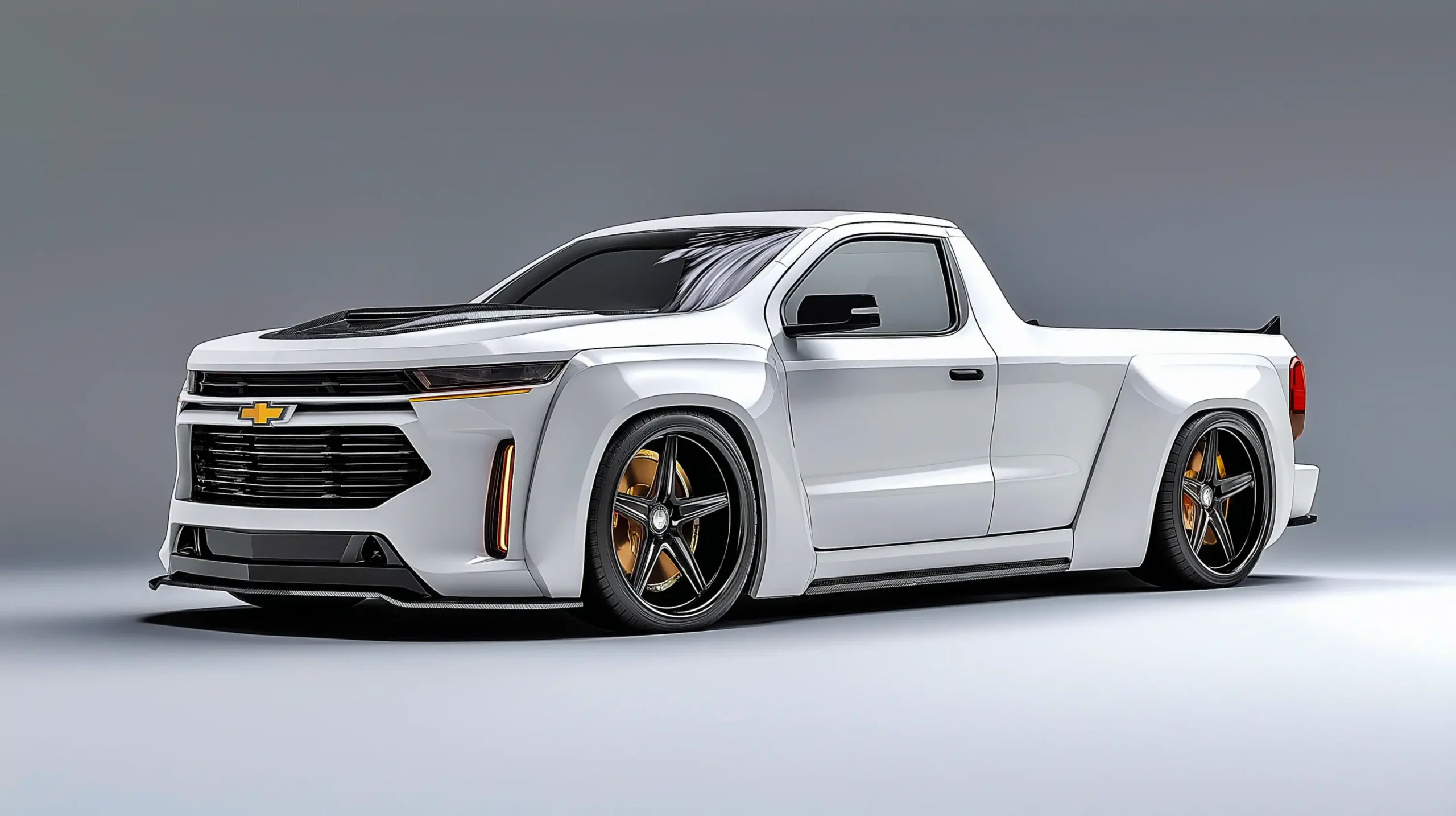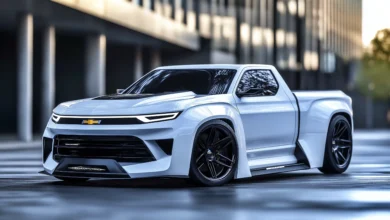2026 Chevy El Camino: Return of the Icon? Specs, Rumors & What We Expect
2026 Chevy El Camino
Whispers. Rumors. Renderings. For years, the automotive ether has buzzed with the tantalizing possibility of a Chevrolet El Camino revival.
Like a beloved rock band hinting at a reunion tour, the mere mention sends waves of nostalgia and anticipation through enthusiasts and casual observers alike.

Now, with the market seemingly ripe for vehicles that defy easy categorization, the whispers surrounding a potential 2026 Chevrolet El Camino have reached a fever pitch.
But what would a modern El Camino be? Is it a phantom of wishful thinking, or could Chevy finally be ready to resurrect its legendary car-truck?
Let’s be unequivocally clear upfront: As of this writing, Chevrolet has not officially confirmed a new El Camino.
What follows is a speculative dive, an exploration grounded in market trends, current Chevrolet platforms, and a healthy dose of educated guessing – much like peering through a slightly dusty crystal ball at what could be one of the most interesting automotive comebacks in recent memory.
Revisiting the Legend: Why the El Camino Still Matters
Before imagining the future, we must acknowledge the past. The original El Camino, produced across five generations from 1959-1960 and 1964-1987, wasn’t just a vehicle; it was a statement.
It occupied a unique space, offering the driving dynamics and comfort closer to a car (often sharing platforms with models like the Chevelle or Malibu) combined with the open-bed utility of a pickup. It was the automotive mullet – business in the front, party in the back – and people loved it.
It catered to those who needed occasional light hauling capability but didn’t want the compromises of a full-size (or even compact) truck for daily driving.
It had style, often performance (especially in SS guise), and an undeniable coolness factor. The disappearance of the El Camino (and its Ford counterpart, the Ranchero) left a void that, arguably, has only recently begun to be tentatively filled by compact unibody pickups like the Ford Maverick and Hyundai Santa Cruz.
Platform Puzzle: Where Would a 2026 El Camino Fit?
This is the million-dollar question. Recreating the original body-on-frame-but-car-based formula isn’t likely in today’s market, dominated by unibody construction for efficiency and refinement. Several possibilities exist:
The Crossover Route
The most plausible scenario involves basing a new El Camino on an existing crossover platform. Think Chevrolet Equinox, Blazer, or perhaps even the slightly larger Traverse.
This offers inherent advantages: proven unibody architecture, existing powertrain options, established safety structures, and familiar interior layouts.
The challenge? Maintaining the low-slung, car-like profile that defined the original. A high-riding El Camino based directly on an SUV might feel more like a Blazer with its roof chopped off behind the B-pillar than a true spiritual successor. Engineering would be needed to lower the ride height and reshape the proportions convincingly.
The Mid-Size Truck Foundation
Could Chevy leverage the robust body-on-frame platform of the current Colorado? This offers genuine truck capability (payload, towing) but risks sacrificing the car-like ride and handling that was central to the El Camino’s appeal.
It might end up feeling too much like a traditional truck, missing the “car” part of the car-truck equation. Significant suspension tuning and bodywork would be required to differentiate it.
A Dedicated Architecture (The Long Shot)
Developing a unique platform specifically for a niche vehicle like the El Camino seems economically improbable in today’s cost-conscious industry unless it could be shared globally or adapted for other models (perhaps a revived Holden Ute for Australia, if GM re-entered that market?).
Our bet? A heavily modified version of a unibody platform, likely shared with the Blazer or a future iteration of GM’s mid-size crossovers, offers the best blend of modern engineering feasibility and captures some of the original’s spirit.
Powertrain Projections: From Eco to Excitement?
Assuming a crossover-based platform, the powertrain options become clearer. Expect Chevrolet’s current lineup staples:
- Turbocharged Four-Cylinder: A 2.0L or 2.5L turbocharged four-cylinder, similar to those found in the Equinox or Blazer, would likely serve as the base engine. Offering a balance of acceptable power (think 230-270 hp) and reasonable fuel economy, this would cater to the daily driver aspect.
- V6 Power (Maybe?): While V6s are becoming less common, a version of GM’s 3.6L V6 (around 310 hp) could be offered as an upgrade, providing more grunt for those wanting a bit more performance or light towing capability, evoking the V8 spirit of old in a modern context.
- Hybridization/Electrification: It’s 2026 we’re talking about. A hybrid option, pairing a smaller gasoline engine with electric motors (perhaps an eAWD system), seems almost mandatory for market relevance and meeting efficiency targets. A full EV El Camino? Stranger things have happened (looking at you, Hummer EV), but it feels less likely for the initial launch, though it could follow later. Forget a naturally aspirated V8 – emissions and fuel economy standards make that a near impossibility for a mainstream return.
Transmission duties would almost certainly be handled by an 8-speed or 9-speed automatic, driving either the front wheels (standard) or all four (optional).
Designing the Dream: Modern Lines, Classic Soul
Styling is subjective, but crucial. A 2026 El Camino couldn’t just be a retro pastiche; it needs to look contemporary while honoring its heritage.
Expect Chevrolet’s current design language – slim LED lighting signatures, a prominent grille (hopefully more car-like than truck-like), and sculpted body sides.
The key, of course, is the profile. It needs that smooth transition from the cabin roofline down towards the tailgate, integrating the bed seamlessly.
The proportions must read “car with a bed,” not “truck with a low roof.” A relatively low beltline and perhaps subtle fender flares could hint at performance potential. Wheel options ranging from stylish 18 inches to sportier 20s would complete the look.
Inside Story: Tech Meets Utility
The cabin would likely mirror contemporary Chevrolet interiors. Expect a driver-focused layout dominated by digital screens – a configurable instrument cluster and a large central touchscreen running Chevy’s latest infotainment system (wireless Apple CarPlay/Android Auto are a given).
Material quality would likely align with upper-trim crossovers – a mix of soft-touch surfaces, durable plastics, and perhaps some metallic or faux-wood accents depending on the trim.
Comfortable seating for two would be standard. While the original occasionally offered cramped rear jump seats, a modern version would likely prioritize front-passenger space and perhaps offer clever storage solutions behind the seats.
Advanced driver-assistance systems (ADAS) – adaptive cruise control, lane-keeping assist, blind-spot monitoring, and automatic emergency braking – would be essential.
The Driving Experience: Blurring the Lines
If based on a unibody platform, the 2026 El Camino should drive much like a modern crossover or sedan. Expect a composed, comfortable ride suitable for daily commutes and highway cruising.
Handling should be predictable and secure, perhaps with a slightly sportier edge than its SUV cousins due to a potentially lower center of gravity.
It wouldn’t carve corners like a Camaro, but it should feel significantly more agile and less cumbersome than a traditional pickup.
The defining factor would be its duality. Comfortable and easy to manage around town, yet capable of hauling bags of mulch, bicycles, or flea market finds on the weekend without the ride penalties or parking challenges of a larger truck.
Payload capacity would likely be modest (think 1,000-1,500 lbs), and towing might cap out around 3,500-5,000 lbs if properly equipped – perfect for small trailers or jet skis.
Price Point and Positioning
Pricing is pure speculation, but logic suggests a starting MSRP somewhere between a well-equipped Equinox/Blazer and a base Colorado. Perhaps starting in the low-to-mid $30,000 range and climbing towards $45,000+ for top trims with AWD and the V6 (if offered).
It would compete directly with the Ford Maverick and Hyundai Santa Cruz, offering a potentially more stylish, slightly larger, and perhaps more performance-oriented alternative, while leveraging the powerful El Camino nameplate.
The Verdict (Before It Exists)
The idea of a 2026 Chevrolet El Camino is undeniably exciting. It taps into a rich vein of automotive history and addresses a modern desire for vehicles that blend efficiency, comfort, and utility in novel ways. The success of the Ford Maverick proves there’s an appetite for smaller, more car-like pickups.
Whether Chevrolet sees enough potential in this niche segment to invest in bringing back the El Camino remains the great unknown.
Engineering challenges, platform decisions, and market projections will ultimately dictate its fate. But if Chevy does decide to pull the trigger, and executes it well – capturing the spirit of the original while delivering modern refinement and technology – the 2026 El Camino could be more than just a ghost.
It could be the return of a legend, perfectly timed for a market rediscovering the appeal of doing things a little differently. We’ll keep our ears to the ground, hoping the whispers turn into a roar.

